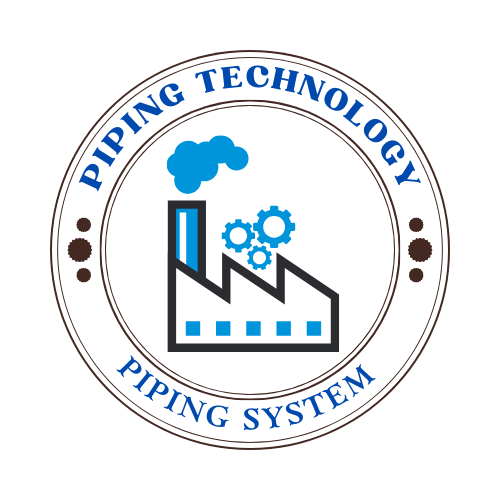Schedule 40 pipe dimensions : schedule 40 steel pipe and schedule 40 pvc pipe
Contents
- 1 What is schedule 40 pipe?
- 2 Schedule 40 pipe dimensions
- 3 Table schedule 40 pipe dimensions from 1/4 in to 20 in
- 4 Schedule 40 steel pipe
- 5 Dimensions schedule 40 steel pipe from 1/4 to 20in
- 6 Schedule 40 pvc pipe
- 7 Table schedule 40 pvc pipe dimension from 1/4 in to 20 in
- 8 Schedule 40 pipe dimensions standards
Schedule 40 pipe dimensions

Contents1 I. What is Nominal Pipe Size?1.1 Key Features of NPS:1.2 Application:2 II. Understanding Nominal Pipe Size2.1 1. Concept of NPS2.2 2. Diameter and Thickness2.3 3. Standardization2.4 4. Measurement Units2.5 5. Using NPS in Calculations2.6 6. Applications Across Industries2.7 7. Importance of NPS Charts3 III. Nominal Pipe Size Chart Explained3.1 Understanding the NPS Chart3.1.1 1. […]

Contents1 I. Types of Pipe Welding Techniques1.0.1 1. Shielded Metal Arc Welding (SMAW)1.0.2 2. Gas Tungsten Arc Welding (GTAW/TIG)1.0.3 3. Gas Metal Arc Welding (GMAW/MIG)1.0.4 4. Flux Cored Arc Welding (FCAW)2 II. How to become a Pipe Welder2.1 Step 1: Obtain a High School Diploma or GED2.2 Step 2: Pursue Technical Training2.3 Step 3: Gain […]

Contents1 I. What are Welding Codes for Piping?2 2.1 Purpose of Welding Codes for Piping:3 II. Major Welding Codes for Piping3.1 1. ASME B31 Series – Pressure Piping Codes3.2 2. API (American Petroleum Institute) Codes3.3 3. AWS (American Welding Society) Standards3.4 4. ISO (International Organization for Standardization) Codes3.5 5. EN (European Norm) Standards3.6 Key Differences […]

Contents1 I. Types of Engineering Drawings1.1 1. Orthographic Drawings1.2 2. Isometric Drawings1.3 3. Detailed Drawings1.4 4. Schematic Drawings1.5 5. Assembly Drawings1.6 6. Exploded View Drawings1.7 7. Perspective Drawings1.8 8. Block Diagrams1.9 9. Flowcharts1.10 10. 3D Modeling and Renderings2 II. Key Elements of an Engineering Drawing2.1 1. Title Block2.2 2. Drawing Scale2.3 3. Line Types and […]

Contents1 I. Scope and Purpose of ASME B16.341.0.1 Scope1.0.2 Purpose2 II. Valve Types Covered by ASME B16.342.0.1 1. Gate Valves2.0.2 2. Globe Valves2.0.3 3. Check Valves2.0.4 4. Ball Valves2.0.5 5. Plug Valves2.0.6 6. Butterfly Valves2.0.7 7. Pressure Relief Valves (PRVs)2.1 Key Features Across Valve Types3 III. Pressure-Temperature Ratings in ASME B16.343.0.1 Key Concepts3.0.2 Pressure-Temperature Rating […]

Contents1 I. Scope of ASME B16.111.1 Industry Applications1.2 Pressure Classes and Material Specifications1.3 Purpose and Importance2 II. Types of Fittings in ASME B16.112.0.1 1. Socket-Weld Fittings2.0.2 2. Threaded Fittings2.1 Comparison of Socket-Weld vs. Threaded Fittings3 III. Material and Pressure Classifications in ASME B16.113.0.1 1. Materials Used in ASME B16.11 Fittings3.0.2 2. Pressure Classes in ASME […]

Contents1 I. What is ASME E488?2 II. Key Provisions and Requirements of ASME E488 Standard3 III. Testing and Performance Criteria for ASME E4884 IV. Installation and Inspection Guidelines for ASME E4885 V. Benefits of Using ASME E4886 VI. ASME E488 vs. Other Standards for Structural Anchors6.1 Summary Comparison Table7 Conclusion In the world of engineering […]

Contents1 I. What is ASME B16.5 Standard ?1.1 Scope and Purpose1.2 Key Features of ASME B16.51.3 Importance of ASME B16.5 Compliance2 II. Type of flange defined in ASME B16.52.1 1. Weld Neck Flange2.2 2. Slip-On Flange2.3 3. Socket Weld Flange2.4 4. Threaded Flange2.5 5. Lap Joint Flange2.6 6. Blind Flange2.7 7. Ring-Type Joint (RTJ) Flange3 […]

Contents1 I. What are API 6A Standards?1.1 Key Aspects of API 6A Standards:2 II. Key Components and Specifications of API 6A2.1 1. Wellhead Equipment2.2 2. Christmas Trees2.3 3. Connectors and Flanges2.4 4. Material Requirements2.5 5. Pressure and Temperature Ratings2.6 6. Testing and Quality Assurance2.7 7. Design and Manufacturing Standards2.8 8. Traceability and Documentation3 III. Design […]

Contents1 I. What is API 620?1.0.1 Key Aspects of API 620:2 II. Scope of API 620 Standard2.0.1 Key Elements of the API 620 Scope:3 III. Design Requirements for API 620 Tanks3.0.1 1. Structural Design Criteria:3.0.2 2. Materials and Toughness:3.0.3 3. Welding Standards and Procedures:3.0.4 4. Tank Roof and Bottom Design:3.0.5 5. Environmental and Loading Considerations:3.0.6 […]


 Automation System
Automation System  Energy Engineeing
Energy Engineeing  Instrumentation System
Instrumentation System  Mechanical Engineeing
Mechanical Engineeing  Piping Technologies
Piping Technologies  Transportations
Transportations  Manufacturing
Manufacturing  Training Material
Training Material 
